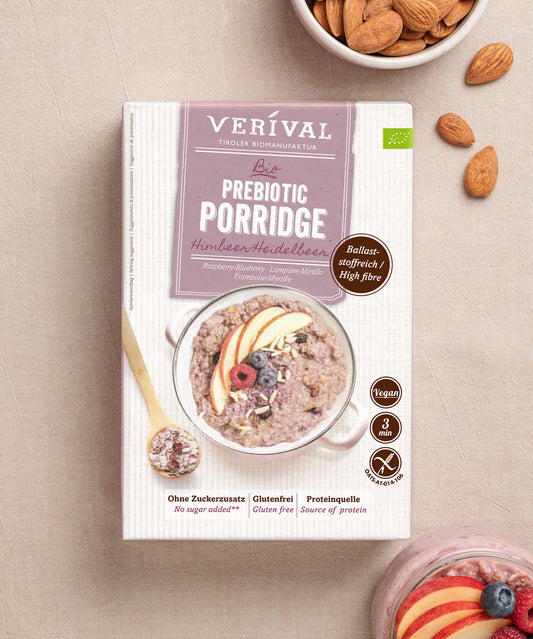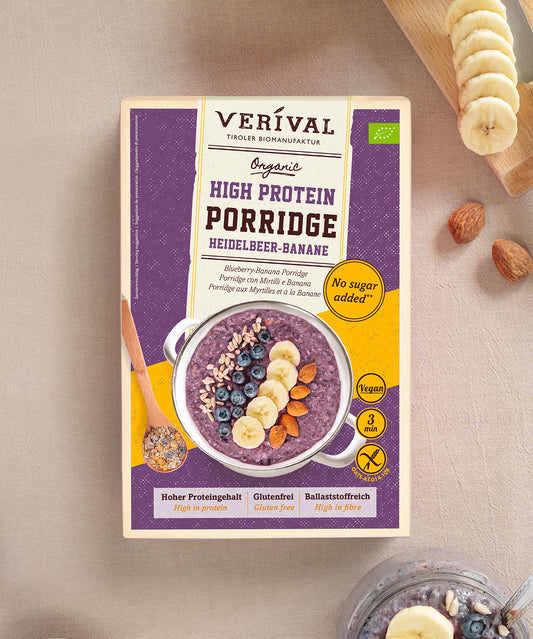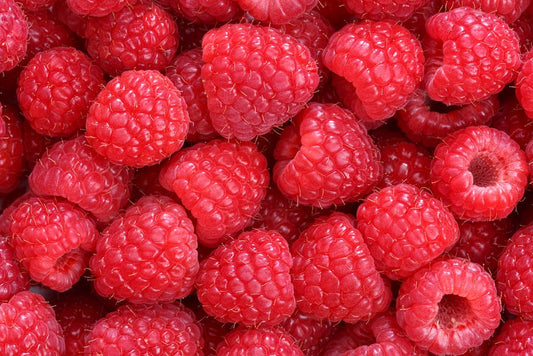Plant-based drinks are currently very much in vogue – but are they really justified? That's exactly what we're going to take a closer look at in today's blog post. We will not only analyze the plant-based drinks themselves, but also compare them with classic cow's milk. In this article, you will learn which product comes out on top in the comparison, what you should look out for and how you can make your own plant-based drink creations for your porridge, for example.
Breakfast variety in organic quality from Verival – discover it now
How plant-based drinks are made
Usually, to make plant-based drinks, the basic ingredient – oats, spelt, rice or similar – is soaked in water and then blended or ground. The remaining lumps or flour residues are then filtered out and the drink is supplemented with salt, oil and sweeteners. The whole thing is then usually preserved by applying heat, which is why most of the plant-based drinks have a significantly longer shelf life than cow's milk, for example.
Unfortunately, sugar is often used as a sweetener in the food industry. The fact that some plant-based drink manufacturers use flavorings or stabilizers is not necessarily ideal either. That's why it's a good idea to regularly grab a blender and make your own drink – preferably with natural sweeteners like dates, honey, or agave syrup.
Making plant-based milk alternatives is extremely easy, which is why, with a little practice, you can also make your own plant-based drink. The main ingredient of milk alternatives is water, while the second main ingredient varies from product to product.
The most popular plant-based drinks in the Öko-Test consumer report – find out more here
The big nutrient comparison
To compare cow's milk and its alternatives in a meaningful way, we should first take a closer look at the energy content and the nutrients it contains. While classic whole milk contains about 64 kilocalories per 100 milliliters, plant-based drinks usually contain slightly fewer calories.
However, the plant-based milk alternatives differ considerably, which is why it is difficult to give a clear figure. While some nut drinks get by on just over 10 kilocalories, a high-protein soy milk has 30 to 50 kilocalories per 100 milliliters.
Thus, plant-based drinks are slightly ahead in this comparison – but what is really interesting is the content of micronutrients, as these are what make a healthy product.
These nutrients make up cow's milk
Let's start by looking at cow's milk. A full-fat milk has about 64 kilocalories per 100 milliliters – of which about three and a half grams are proteins and fats, while carbohydrates are represented with just under five grams.
The fats contained in milk are mainly saturated fatty acids, which should only be consumed in moderation as they can pose a threat to the cardiovascular system.
The carbohydrates are 100 percent sugar. However, this occurs naturally in milk as lactose, so you shouldn't be immediately put off. Nevertheless, excessive consumption should be avoided, as a glass of milk can quickly add up to around ten grams of sugar.
However, the protein content is worth mentioning, which, at around eight grams per glass, is quite impressive. The biological value of these proteins is also extremely noteworthy, with a value of 85. As a reminder, the higher the value, the better the supplied protein can be used as a building material in the human body.
In addition, milk is a high-quality source of calcium, which is particularly important for healthy bones and teeth. What's more, cow's milk provides you with a number of important vitamins, including vitamins A, D and B12.
These are the nutrients that plant-based drinks lack.
Plant-based drinks are lower in calories than whole milk. Soy milk, for example, contains just under 50 calories on average – however, the energy content of plant-based milk alternatives varies greatly, with soy milk usually having the highest energy content. Nut milk, for example, contains less than 20 calories.
The lower calorie content of plant-based drinks is mainly due to their higher water content and thus a comparatively lower proportion of fats and carbohydrates.
Soy milk, for example, contains only around two grams of fat, the majority of which are healthy unsaturated fatty acids. The carbohydrate content is also somewhat lower than in whole milk, at around two and a half grams per 100 milliliters.
By contrast, the protein content is almost as high as in whole milk, at around seven grams per glass. In addition, the high biological value of the soy milk proteins should be emphasized, which is extremely high at 84.
The content of micronutrients in soy milk is also noteworthy. For example, it contains plenty of folic acid and some healthy plant substances such as flavonoids or saponins.
B or D vitamins do not occur naturally in soy milk in significant quantities, but it is often supplemented in the food industry with artificial additions of calcium, vitamin B12, and vitamin D.
Which plant-based drink is best?
While soy milk only differs marginally from whole milk in terms of nutrient distribution, other milk alternatives differ greatly in some cases. The following table provides an overview of the different plant-based drinks in comparison to whole milk.
| Calories | Carbohydrates | Fats | Saturates | Proteins | Sugar | |
| Whole milk | 65 kcal | 4,7g | 3.6g | 2.4g | 3.4g | 4,7g |
| Soy Milk | 39 kcal | 2.5 g | 1.8 g | 0.3g | 3.0g | 2.5 g |
| Oat Drink | 40 kcal | 6.0g | 1.4 g | 0.2g | 0,6g | 3,8g |
| Almond drink | 13 kcal | 0.0 g | 1.1g | 0.1g | 0,4g | 0.0 g |
| Sparkling drink | 45 kcal | 8,4g | 1.0g | 0.1g | 0.3g | 5,7g |
However, it should be noted that the nutritional values of the individual plant-based drinks vary from manufacturer to manufacturer and can differ considerably in some cases.
So which is healthier?
While classic whole milk stands out due to its high protein content, the amount of calcium and vitamins – however, it contains unhealthy saturated fatty acids, cholesterol and lactose, which can be particularly problematic for people with allergies.
In addition to the health aspects, it should also be noted that the environmental balance of cow's milk is comparatively poor. The greenhouse gases emitted during production are three to four times higher than those produced by plant-based drinks.
Soy milk, on the other hand, has a lower content of unhealthy saturated fatty acids and contains no cholesterol, but it also contains hardly any vitamin A or B. The protein content is very similar, as is the biological availability.
However, there are now a wide variety of different milk alternatives with individual strengths and weaknesses, which is why it is difficult to draw a clear conclusion. It is best to simply adjust your milk (substitute) consumption to your individual needs and to regularly alternate the alternatives in order to enjoy all the benefits.
























